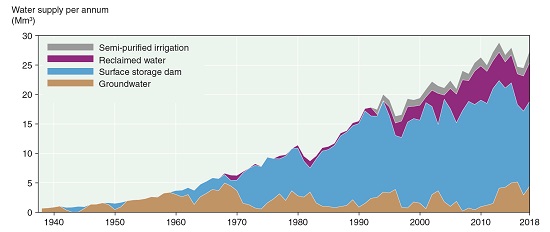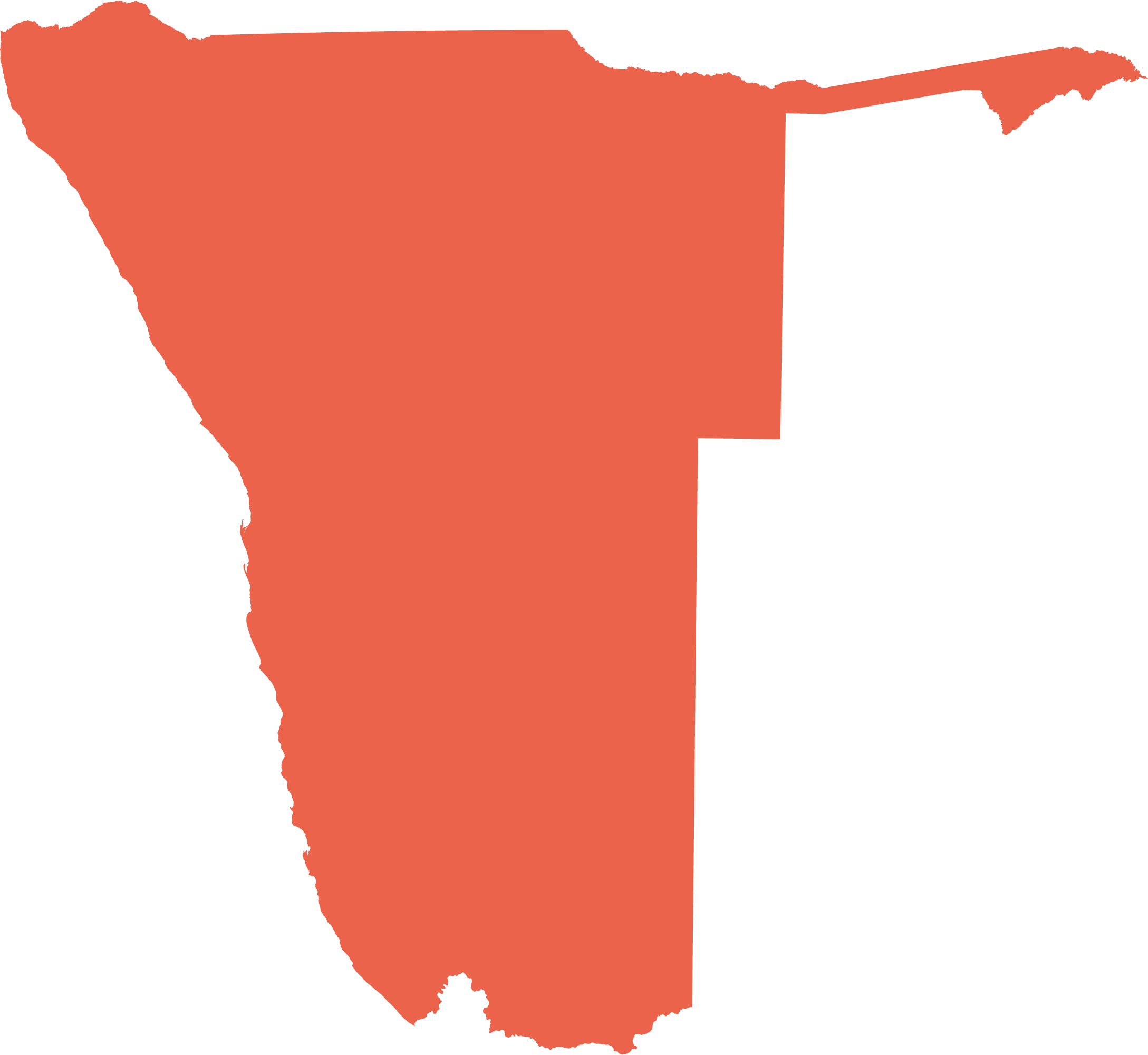Supplying Windhoek with water
NamWater supplies most towns and cities with bulk water, but Windhoek supplements this supply with its own groundwater sources and reclaimed water, especially following years of poor rains. Various and alternative sources are then used in greater amounts, and measures are implemented to control or reduce the demand for water.
4.27 Volumes of water supplied from different sources to Windhoek, 1938–201830

Windhoek's supply comprises a mix of water from conventional sources (surface water and groundwater) and unconventional sources (reuse of semi-purified and reclaimed water) and interventions (artificially recharging its aquifer). Water restrictions, water-saving campaigns and increasing block tariffs have been used to reduce demand during periodic droughts, including those of 1980–1982, 1994–1996 and 2015–2019. The use of groundwater increased during those drought periods, and reclaimed water has grown in importance, providing 26 per cent of Windhoek's potable supply in 2018.
4.28 Recharging Windhoek's groundwater
About 20 per cent of all Namibians live in Windhoek where they – and the associated concentration of public services and industries – require a substantial supply of water. On average in recent years, this has amounted to about 25.4 million cubic metres per year. Dams such as Von Bach and Swakoppoort have met about two thirds of this water demand, 26 per cent has come from reclaimed water and 7 per cent from Windhoek's aquifer. However, during the severe drought of 2019 groundwater abstraction contributed 39 per cent of Windhoek's needs.
The aquifer is thus of great value as an emergency supply and has the major advantage over surface water in that it does not lose water to evaporation. To secure this supply of groundwater, Windhoek embarked on an innovative programme to supplement its groundwater in years of high rainfall, thereby increasing the aquifer's production capacity in dry years. At the time of compiling this atlas, Windhoek had seven recharge boreholes which can be used to recharge the aquifer with 4.2 million cubic metres of water per year, giving the city a considerable reserve for use in times of drought.

This diagram illustrates the link between the Auas Mountains and Windhoek and how groundwater levels dropped after the 1950s, thus creating a cone of depression which could be recharged by injecting treated water from Von Bach Dam.31

